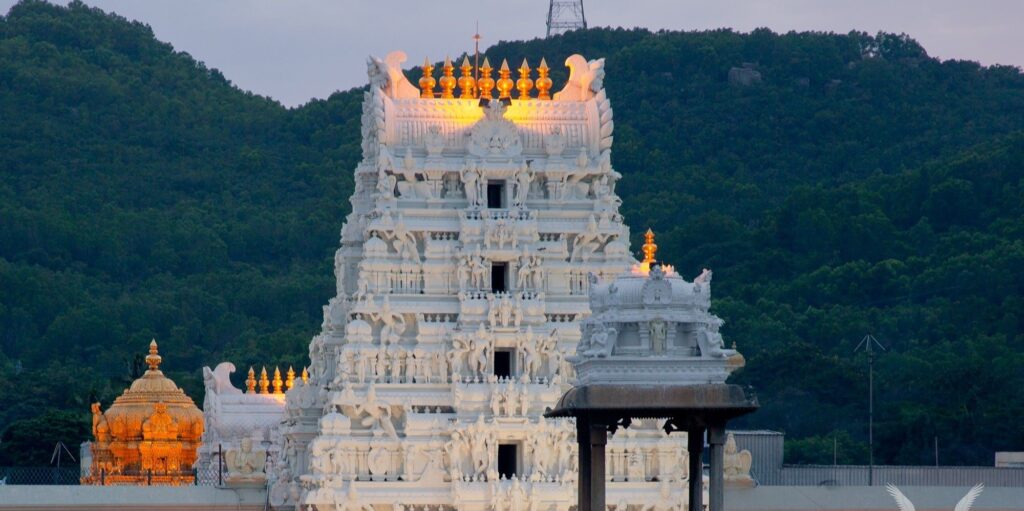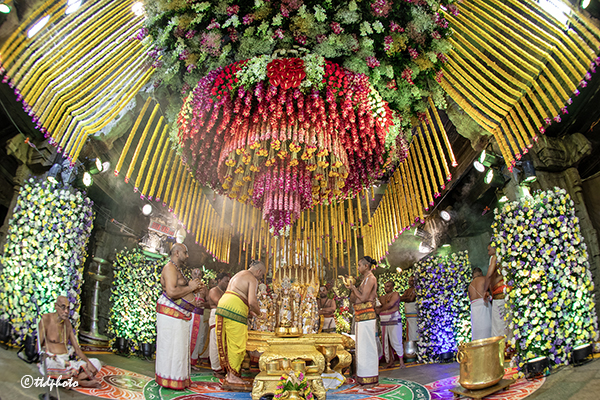Article by – Sri T.K. Krishnaswami Thathacharya Peculiar Terminology Our ancient Hindus tried to focus the infinite powers and attributes of the invisible divinity in a visible image for ministering to our spiritual welfare. The Mahabharata (Mausala Parvam Chapter – V) states the origin of image worship. It is unknown when the Lord came to Read More
Tag: Sri Bhandaram
Snapana Mandapam (Mandapam of Holy Ablutions)
Snapana Mandapam As you enter through Golden doors you come across, not very much illuminated, a 27 feet quadrangular mandapam. This (Snapana Mandapam) has four pillars in the middle portion. Sculptured figures of Balakrishna, Yoga Narasimha, Sri Krishna Kaliya Mardhana, etc., can be seen on these pillars. It is known as “Tiruvilan Koil”, a Tamil Read More


